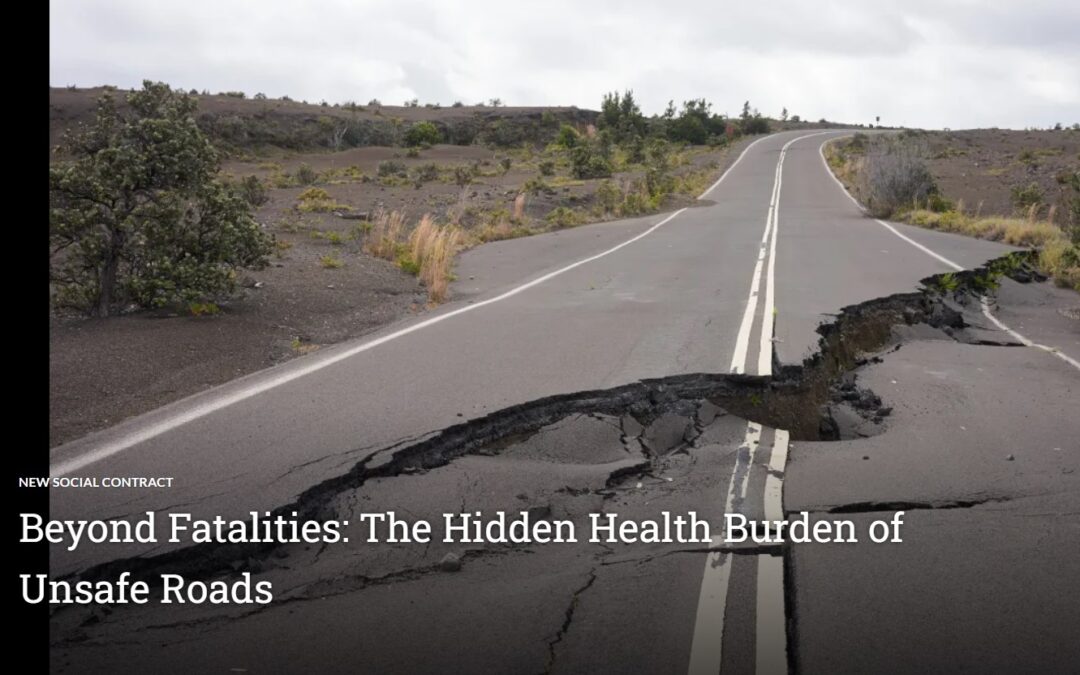Article reproduced from OECD Development Matters, 17 May 2023
By Nneka Henry, Head of the UN Road Safety Fund and Rob McInerney, Chief Executive Officer for the international Road Assessment Programme (iRAP)
Long after the world recovers from the COVID-19 pandemic, another health crisis will require urgent attention: the global road safety crisis. While the number of deaths resulting from road crashes stands at an alarming 1.3 million every year, it only scratches the surface of the problem.
For the health burden of unsafe roads extends far beyond fatalities, with life-changing injuries impacting up to 50 million people each year. This week marks the 7th UN Global Road Safety Week, and it is clear that governments and citizens need to take fresh action to make mobility safer and more sustainable.
It’s more than lives lost on the road
For every road fatality, there are many more, mostly young people in the prime of their lives, who suffer non-fatal injuries. According to the iRAP Safety Insights Explorer, more than 4 million people suffer brain injuries; around 400,000 are left paralysed or suffer spinal injuries; and more than 9,000 are rendered blind every year. These life-altering injuries can mean the difference between having a job and losing a job, taking a walk or being confined to bed for life, and even being able to have children.
The cost of not investing in safety
In addition to the physical and psychological harm, road crashes also have serious consequences for already strained healthcare systems and for the many families who often share the burden of caring for those injured. The cost of treating road injuries and providing ongoing care and rehabilitation can be exorbitant. This is particularly the case in low-and middle-income countries (LMICs) where many health systems are underfunded and ill-equipped to handle such emergencies.
Finally, road crashes exacerbate inequalities, as the most vulnerable road users, such as pedestrians, cyclists, and motorcyclists, are often the ones most affected by unsafe roads. In LMICs, where road infrastructure shortcomings are greater, the burden of road crashes falls disproportionately on the poor and marginalised communities. For example, in LMICs, 83% of travel for pedestrians is on unsafe 1- to 2-star infrastructure (where 5-star ranks as the safest). Similarly, 85% of travel for cyclists and 71% of travel for people on motorcycles is on high-risk 1- or 2-star roads. By contrast, in high-Income countries, 64% of travel for pedestrians is on 1 or 2-star infrastructure and 63% of travel for cyclists and 86% of travel for motorcyclists is on 1 or 2-star roads.
It is clear that the health consequences of this ‘pandemic on wheels’ extend far beyond fatalities, and call for urgent action and funding. The ripple effects caused by road crashes could be substantially prevented with a modest amount of catalytic, sustained funding that delivers high returns.
Small amounts mobilise big results
The concept of small funding achieving big results is not new to the mobility agenda. The UN Road Safety Fund, which launched its first set of projects in the months preceding the COVID-19 pandemic, has shown how relatively small amounts of funding for low- and middle-income countries can bring about meaningful road safety changes. From vehicle and motorcycle helmets standards and driving licensing, to emergency medical services and safe infrastructure protecting pedestrians and cyclists, the portfolio of the Fund’s accredited implementing partners, which includes iRAP, is helping to change critical aspects of road safety systems in close to 50 countries.
Such funding by the UN Road Safety Fund and partners can accelerate the institutional changes needed for investment by international donors and domestic agencies to improve road safety, in line with global goals. At the same time, it builds the business case for increased investment that saves lives and reduces injuries.
Global targets save lives and costs
In recognition of this evidence-based impact, UN Member States have agreed on 12 Global Road Safety Performance Targets that include raising the safety of road infrastructure. Ensuring that at least 75% of existing travel for all road users reaches the 3-star or better global standard by 2030 will save more than 95 million deaths and serious injuries over the 20-year life of the treatments in LMICs alone.
Achieving the UN target for more than 75% of travel to be on 3-star or better roads for all users by 2030 will reduce fatalities and serious injuries over the 20-year life of the roads. In the months ahead, UN Secretary General’s Special Envoy for Road Safety Jean Todt will meet leaders in around the world, including in Bangladesh and Paraguay, which have some of the world’s highest road death and injury rates. The discussions will focus on how to lessen the growing burden these impose on their economies, and the benefits of long-term road safety action plans and sustainable investment.
We are all road users, and together, we can tackle the global road safety crisis. The first step is to expose the hidden health burden of unsafe roads; the second is to work together to make our roads safe for everyone to use. By prioritising and advocating for road safety and by taking action to prevent injuries and fatalities, we can create a safer and healthier future for ourselves and generations to come.


















